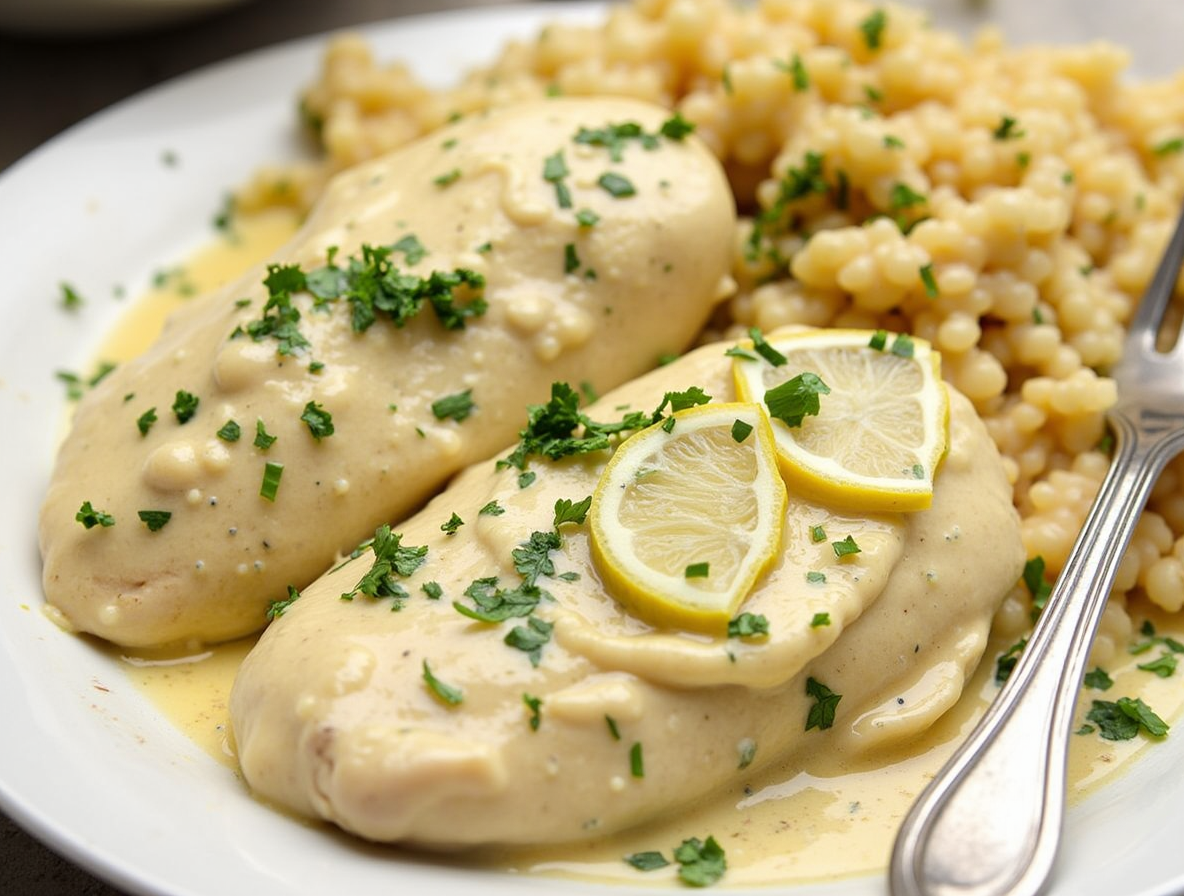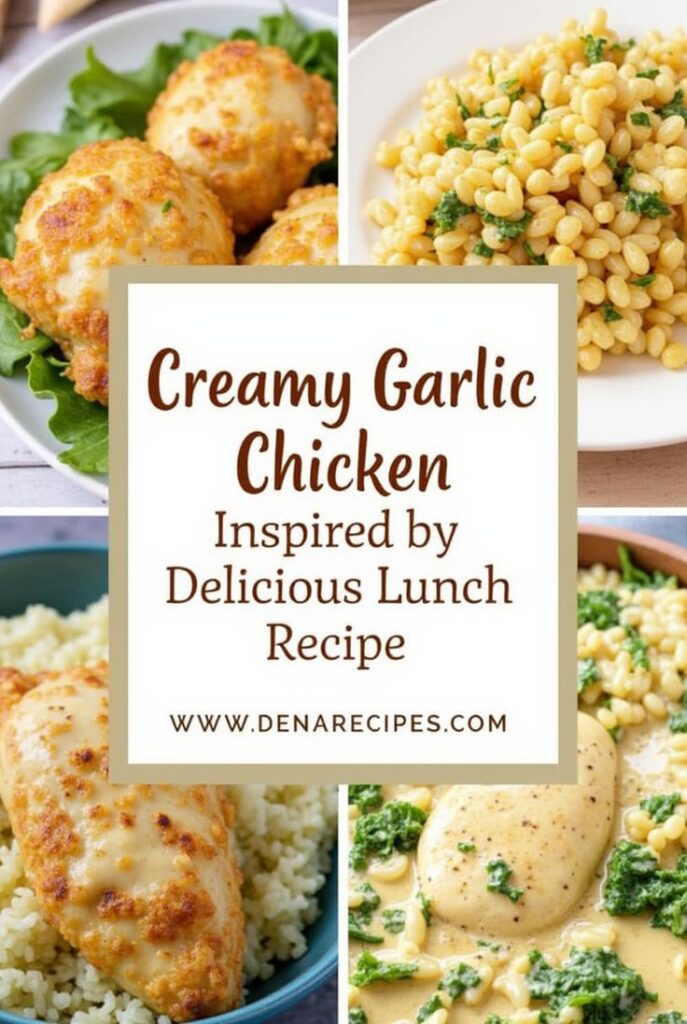How to Make Creamy Garlic Chicken: A Foolproof Recipe for Perfect Results
Did you know our creamy garlic chicken recipe has been viewed over 27 million times across social media?
This mouthwatering dish has earned rave reviews, with one reader describing it as “one of the best things I have ever eaten!!!” Furthermore, our easy creamy garlic chicken is ready in just 30 minutes, making it perfect for busy weeknights when you still want something special.
What makes this creamy garlic chicken recipe truly stand out is its bold flavor profile. We use both garlic powder and an entire head of garlic, creating a deep, rich taste that’s surprisingly not overpowering. Additionally, the heavy cream creates that luxurious creamy garlic chicken sauce that’s the hallmark of good comfort food.
This versatile dish pairs beautifully with mashed potatoes, rice, or pasta, and you can even make it ahead of time and store it in the refrigerator for up to 3 days. Whether you’re a beginner or experienced cook, we’ve designed our instructions to be straightforward and foolproof, ensuring you’ll achieve perfect results every time.
Essential Ingredients for Creamy Garlic Chicken
Creating the perfect creamy garlic chicken starts with selecting the right ingredients. The quality of what goes into your pan directly impacts the final flavor of this beloved dish. Let me guide you through everything you need to create this restaurant-worthy meal at home.
Essential Ingredients for Creamy Garlic Chicken
The magic of creamy garlic chicken lies in its simplicity and the harmonious blend of ingredients that create its signature rich, savory profile. Each component plays a crucial role in developing the depth of flavor that makes this dish so irresistible.
Choosing the Perfect Chicken
Choosing the right cut of chicken is your first critical decision. You have several excellent options, each with distinct advantages:
Chicken Breasts: I often use boneless, skinless chicken breasts because they cook quickly and absorb flavors beautifully. For even cooking, I recommend cutting larger breasts in half lengthwise to create thinner cutlets. This technique ensures they remain tender and cook more evenly. If using whole breasts, consider pounding them to an even thickness to prevent drying out parts while waiting for thicker sections to cook through.
Chicken Thighs: Dark meat lovers rejoice! Boneless, skinless chicken thighs make an excellent alternative to breasts in this recipe. The natural fat content in thighs makes them more forgiving if slightly overcooked, resulting in juicier meat. They typically take slightly longer to cook than breast cutlets but reward you with deeper flavor. Many chefs prefer thighs specifically because they’re harder to dry out when cooking over medium-high heat.
Bone-in Options: For maximum flavor, some recipes call for bone-in, skin-on chicken thighs. The bones and skin contribute extra richness to the sauce, though this option requires longer cooking time.
Here’s a quick comparison to help you decide:
| Chicken Cut | Cooking Time | Texture | Best For |
|---|---|---|---|
| Breast Cutlets | Fastest | Lean, tender when not overcooked | Quick weeknight meals |
| Chicken Thighs | Medium | Juicier, more forgiving | Robust flavor, less worry about overcooking |
| Bone-in Thighs | Longest | Most flavorful, juiciest | Weekend cooking when time isn’t tight |
The Garlic Equation
Now for the star ingredient – garlic! This isn’t just any garlic chicken; it’s creamy garlic chicken, which means we’re not holding back. There are multiple ways garlic appears in this dish:
Whole Garlic Cloves: Many recipes call for an entire head of garlic, with cloves left whole or halved rather than minced. Don’t panic at this amount – cooking mellows and transforms garlic’s pungency into sweet, aromatic bliss. As one recipe reassuringly notes, “If you’ve never really cooked with whole garlic cloves before, don’t worry. Cooking them in the sauce mellows them right out. It’s nothing like biting into raw garlic”.
Fresh Minced Garlic: Some variations use freshly minced garlic instead of or alongside whole cloves. This creates a more distributed garlic flavor throughout the sauce.
Garlic Powder: Despite all that fresh garlic, many recipes also incorporate garlic powder. This might seem redundant, but it actually adds a different dimension of garlic flavor. Fresh garlic provides bright, complex notes while garlic powder contributes a deeper, more rounded garlic undertone.
Important Note: Several recipes specifically caution against substituting jarred garlic for fresh. One recipe states plainly: “I do not recommend jarred garlic or garlic powder for this recipe — fresh has the best flavor!”. Another notes that while readers have tried using jarred minced garlic, “the results won’t be the same”.
The Creamy Base
The luxurious texture of creamy garlic chicken comes primarily from:
Heavy Cream: Nearly every authentic recipe specifies heavy cream (also called heavy whipping cream) as essential [72]. It creates that velvety texture without requiring additional thickeners. Multiple recipes emphasize this point: “Sub the cream at your own discretion. If you use something like milk or half-and-half, the sauce may curdle due to the high heat and end up thinner”. Another states clearly: “I don’t recommend a substitute for this, you just don’t get that rich creaminess with milk”.
Flour or Thickeners: Flour serves a dual purpose – it creates a delicious crust on the chicken and helps thicken the sauce. Some recipes use a straight flour dredge, while others mix in grated Parmesan cheese with the flour for added flavor.
Butter and Oil: The combination of butter and olive oil creates the perfect fat base for sautéing. Butter provides rich flavor while olive oil prevents the butter from burning at higher temperatures. This dynamic duo is the foundation upon which all other flavors build.
Flavor Builders
Beyond the primary ingredients, these elements add complexity and depth:
Chicken Broth: This forms the savory base of the sauce [72] [81]. Some recipes specify low-sodium options so you can control the final saltiness. For an elegant variation, substitute a dry white wine like pinot grigio or sauvignon blanc for part of the broth.
Parmesan Cheese: Many recipes incorporate freshly grated Parmesan cheese into the sauce for nutty, umami richness. Freshly grated melts more smoothly than pre-packaged options, though in a pinch, even “the stuff in the green bottle would work”.
Acid Balance: Lemon juice appears in numerous recipes as it cuts through the richness of the cream and brightens the entire dish. This small addition makes a significant difference in balancing flavors.
Herbs and Seasonings: Common additions include:
- Italian seasoning [73]
- Salt and pepper (fundamental to nearly every version)
- Dijon mustard [101]
- Onion powder [101]
- Fresh herbs like parsley, tarragon, or basil
- Soy sauce or Worcestershire sauce for depth
Secret Flavor Boosters
Several recipes include surprising ingredients that contribute to the overall complexity:
Cajun Seasoning: Some variations incorporate Cajun seasoning for a subtle heat and depth of flavor.
Bouillon: Beyond regular chicken broth, some recipes suggest adding a beef bouillon cube or paste for extraordinary depth.
Shallots: Milder than onions with a touch of sweetness, shallots add aromatic complexity to the sauce.
Customization Options
One of the beauties of creamy garlic chicken is its adaptability. Here are several ways to customize the recipe to your preferences:
Heat Level: Adjust with red pepper flakes or omit for milder palates.
Texture: For a thicker sauce, some recipes suggest adding a roux of flour and butter or a cornstarch slurry.
Add-ins: Popular additions include:
- Sautéed mushrooms
- Spinach
- Caramelized onions
- Crumbled bacon
Dairy Alternatives: For those who need to avoid dairy, there are options, though with caveats. “You can make a dairy-free version by substituting the butter with olive oil or a dairy-free butter alternative and replacing the heavy cream with a non-dairy cream or coconut milk”. However, be aware that texture and flavor will differ from the classic version.
Ingredient Quality Considerations
The quality of your ingredients significantly impacts your final dish:
Fresh vs. Packaged: Fresh garlic cloves provide substantially better flavor than pre-packaged alternatives. Similarly, freshly grated Parmesan offers superior meltability and flavor compared to pre-grated options.
Chicken Quality: Look for chicken that’s plump, with good color, and no strong odor. Organic or free-range options often provide better flavor, though they’re not essential.
Broth Shortcut: Several recipes mention using Better Than Bouillon paste as a convenient, flavorful alternative to boxed broth. It has a long shelf life and allows you to make exactly the amount needed.
Cream Freshness: Check the expiration date on your heavy cream. The fresher it is, the better it will perform in the sauce without risk of curdling.
Budget-Friendly Options
Creating this luxurious dish doesn’t have to break the bank:
Chicken Selection: Thighs are typically less expensive than breasts while delivering exceptional flavor. Buying family packs when on sale and freezing portions can further reduce costs.
Garlic Economy: During garlic season, buy extra and freeze it (either whole cloves or minced in olive oil). This preserves flavor and saves money compared to buying it weekly.
Broth Alternatives: As mentioned, Better Than Bouillon paste offers good value since you only use what you need without waste.
Ingredient Preparation Tips
For the best results, prepare your ingredients thoughtfully:
Chicken Preparation: Pat chicken dry before seasoning to ensure better browning. Allow it to come to room temperature for about 15 minutes before cooking for more even results.
Garlic Handling: When using whole cloves, simply peel them without further chopping. For recipes calling for minced garlic, crush the clove slightly with the flat side of your knife before mincing for easier handling.
Pre-measuring: Measure all ingredients before beginning to cook. Several recipes emphasize this prep work: “Combine the chicken broth, bouillon cube, soy sauce, onion powder, mustard powder, and thyme in a large measuring cup with a spout and set aside”. This organization makes the cooking process much smoother, especially since the dish comes together quickly.
By understanding these essential ingredients and how they work together, you’re well on your way to creating perfectly creamy garlic chicken. The thoughtful selection and preparation of each component builds the foundation for this beloved comfort food dish that continues to win over millions of home cooks and dinner guests alike.
FAQs
Q1. What are the key ingredients for creamy garlic chicken? The essential ingredients include chicken (breasts or thighs), fresh garlic cloves, heavy cream, chicken broth, butter, olive oil, and seasonings like salt and pepper. Some recipes also incorporate garlic powder, Parmesan cheese, and herbs for added flavor.
Q2. How do you make a creamy garlic sauce for chicken? To make a creamy garlic sauce, sauté minced garlic in butter and olive oil, then add chicken broth and let it reduce. Stir in heavy cream and simmer until the sauce thickens. Season with salt, pepper, and optional herbs or Parmesan cheese for extra flavor.
Q3. Can I use milk instead of heavy cream in the recipe? It’s not recommended to substitute milk for heavy cream in this recipe. Heavy cream provides the rich, velvety texture that’s characteristic of creamy garlic chicken. Using milk may result in a thinner sauce and could potentially curdle due to the high heat used in cooking.
Q4. How long does it take to cook creamy garlic chicken? Creamy garlic chicken typically takes about 30 minutes to prepare from start to finish. This makes it an excellent option for a quick and delicious weeknight dinner that still feels special and indulgent.
Q5. What can I serve with creamy garlic chicken? Creamy garlic chicken pairs well with a variety of sides. Popular options include mashed potatoes, rice, or pasta to soak up the delicious sauce. You can also serve it with steamed vegetables or a fresh salad for a balanced meal.


